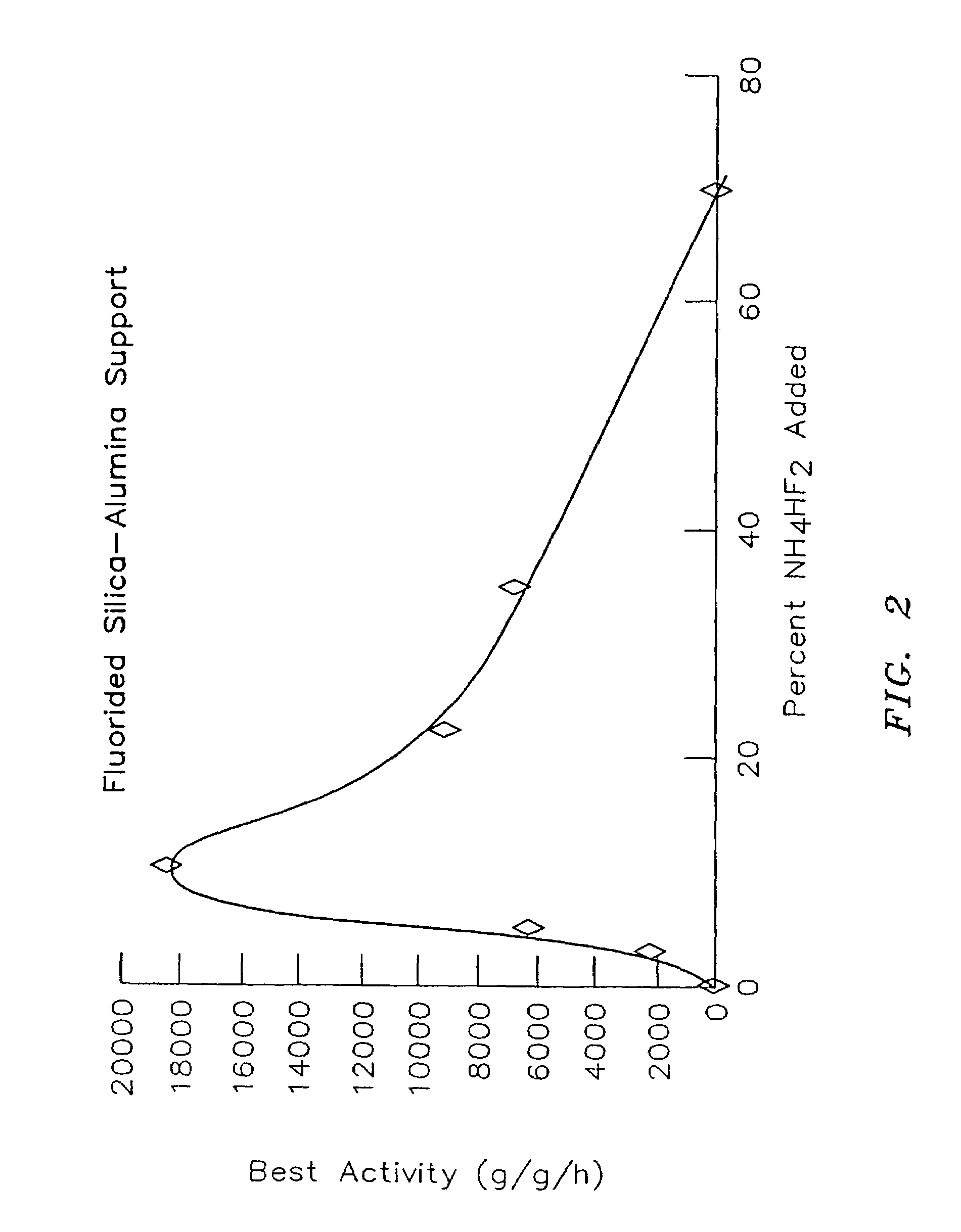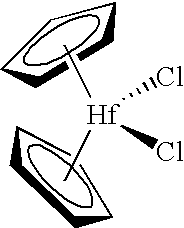Organometal catalyst compositions
a technology of organic catalysts and compositions, applied in catalyst activation/preparation, combustible gas purification/modification, chemical/physical processes, etc., can solve the problems of large amounts of expensive methyl aluminoxane, low productivity, and inability to commercializ
- Summary
- Abstract
- Description
- Claims
- Application Information
AI Technical Summary
Problems solved by technology
Method used
Image
Examples
examples
Testing Methods
[0108]A “Quantachrome Autosorb-6 Nitrogen Pore Size Distribution Instrument” was used to determined surface areas and pore volumes. This instrument was acquired from the Quantachrome Corporation, Syosset, N.Y.
Preparation of Oxide Compounds for Control
examples 3 – 7
Examples 3–7
[0109]Silica was obtained from W. R. Grace, grade 952, having a pore volume of 1.6 cubic centimeter per gram (cc / g) and a surface area of about 300 square meters per gram (m2 / g).
[0110]About 10 grams of the silica were placed in a 1.75 inch quartz tube fitted with a sintered quartz disk at the bottom. While the silica was supported on the disk, dry air was blown up through the disk at the linear rate of about 1.6 to 1.8 standard cubic feet per hour. An electric furnace around the quartz tube was then turned on, and the temperature was raised at the rate of 400° C. per hour to a temperature of 600° C. At this temperature, the silica was allowed to fluidize for three hours in the dry air. Afterward, the silica was collected and stored under dry nitrogen. The silica did not have any exposure to the atmosphere.
[0111]Alumina sold as Ketjen grade B alumina from Akzo Nobel was obtained having a pore volume of about 1.78 cc / g and a surface area of about 340 m2 / g. Alumina samples ...
examples 1 – 2 (
Examples 1–2 (Controls)
[0116]This example demonstrates that an organometal compound added to the reactor with TEA or EADC does not provide any activity.
[0117]A polymerization run was made as described previously except no oxide compound was added. Ethylene was added, but no activity was seen. After one hour of stirring, the reactor was depressurized and opened, but in each case no polymer was found. These results are shown in Table 1.
PUM
| Property | Measurement | Unit |
|---|---|---|
| Temperature | aaaaa | aaaaa |
| Pressure | aaaaa | aaaaa |
| Mass | aaaaa | aaaaa |
Abstract
Description
Claims
Application Information
 Login to View More
Login to View More - R&D
- Intellectual Property
- Life Sciences
- Materials
- Tech Scout
- Unparalleled Data Quality
- Higher Quality Content
- 60% Fewer Hallucinations
Browse by: Latest US Patents, China's latest patents, Technical Efficacy Thesaurus, Application Domain, Technology Topic, Popular Technical Reports.
© 2025 PatSnap. All rights reserved.Legal|Privacy policy|Modern Slavery Act Transparency Statement|Sitemap|About US| Contact US: help@patsnap.com



